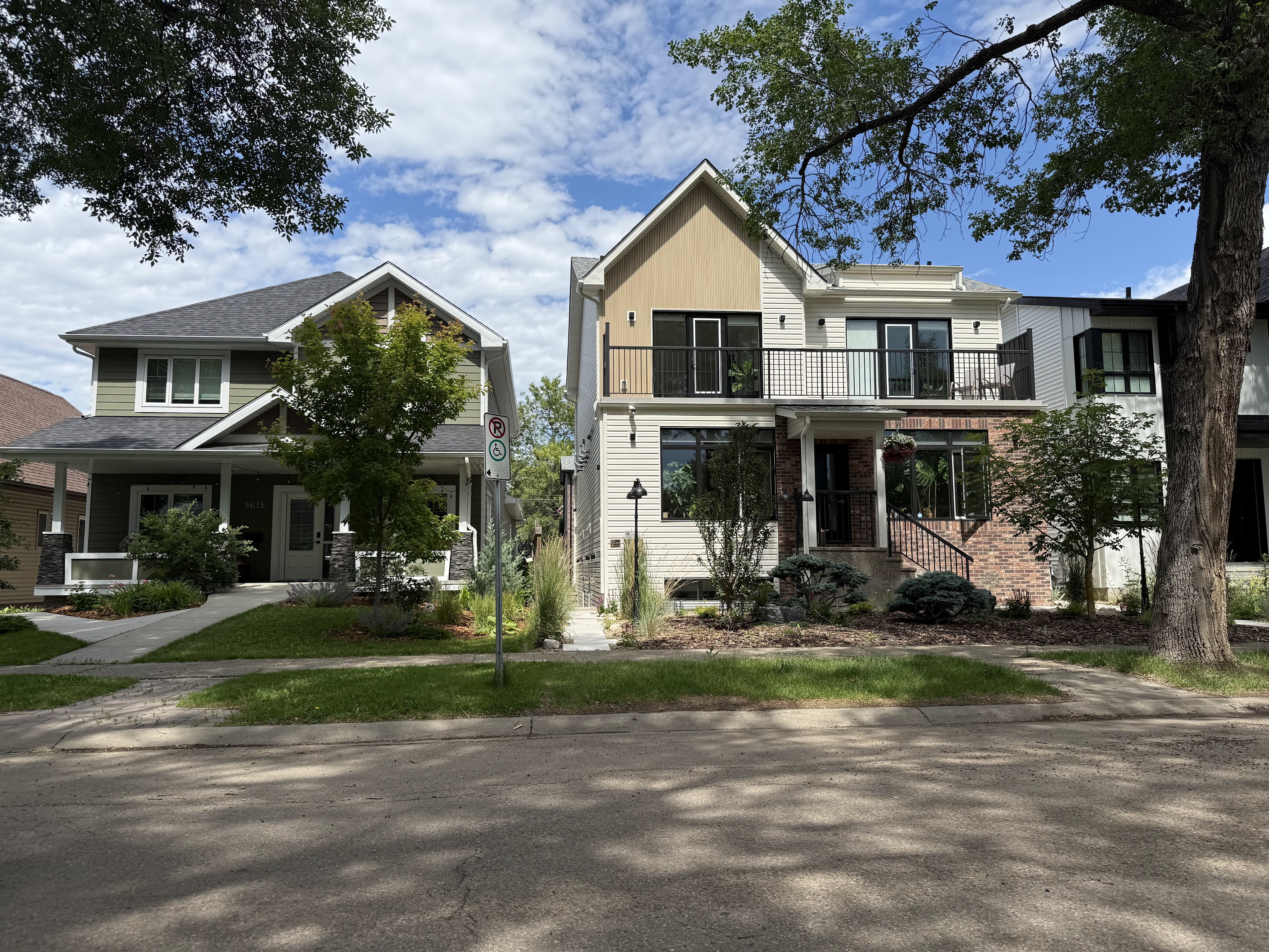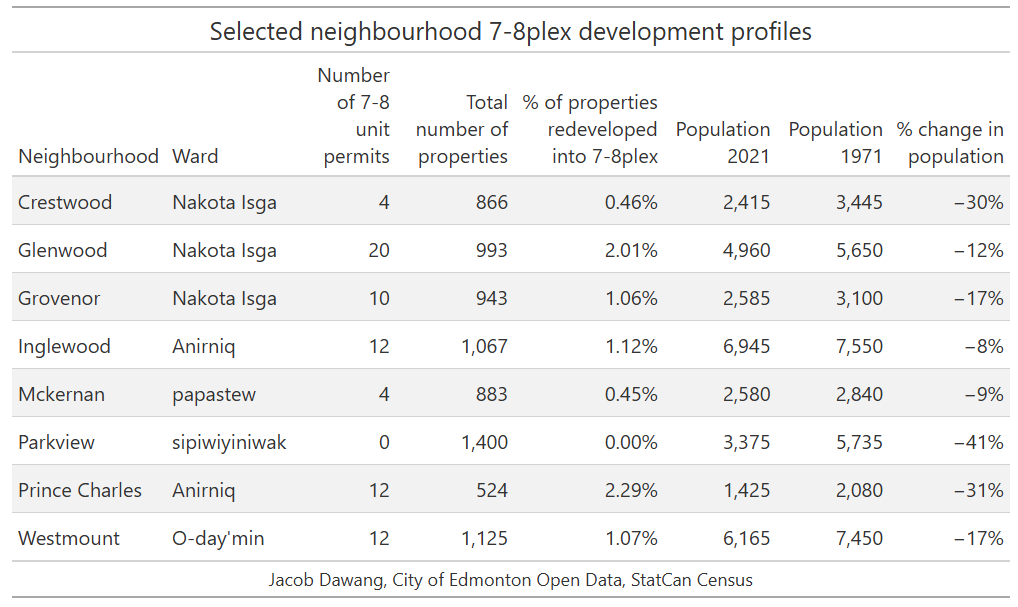
When neighbours voice concerns about infill development, they often worry about overloaded sewers, strained water systems, and crumbling roads. These concerns are understandable, but they're based on outdated assumptions about how our neighbourhoods have changed and how modern homes actually work.
Here's a fact that might surprise you: Edmonton's mature neighbourhoods are actually less populated today than they were 50 years ago. According to analysis of census data, most of our inner-city areas have seen significant population decline since 1971.
Take Crestwood, for example. This established neighbourhood had 3,445 residents in 1971 but only 2,415 in 2021: a 30% decrease in population over 50 years. The same pattern holds across mature neighbourhoods throughout the city. Large family homes that once housed six or eight people now house just two or three.
This means the infrastructure in these neighbourhoods was originally designed and built to serve many more people than currently live there. When we build a duplex or a small apartment building in these areas, we're not pushing infrastructure beyond its limits: we're simply making better use of systems that are already in place and underutilized.

Even if we were adding the same number of people to these neighbourhoods, today's homes are dramatically more efficient than those built decades ago. The numbers are striking:
Toilets: Older toilets from before 1982 use 19-26 litres per flush, while modern efficient toilets use just 4.8 litres per flush. That's an 80% reduction in water usage.
Showers: Old-style showerheads can use up to 20 litres per minute, while modern efficient models use 9 litres per minute or less, cutting water usage by more than half⁴.
Dishwashers and washing machines: These appliances have seen similar efficiency improvements, using a fraction of the water their predecessors required.
When you add up all these improvements, a new home today uses significantly less water than an equivalent home from the 1970s or 1980s. This means even with more housing units, the total demand on water and sewer systems may actually be lower than in previous decades.
There's a built-in safeguard that many people don't know about: Edmonton's utility provider, EPCOR, doesn't allow any development to proceed unless existing infrastructure can accommodate it.
Before any new housing can be built, developers must demonstrate that there's adequate water and sewer capacity. If the existing infrastructure can't handle the additional demand, it must be upgraded at the developer's expense before construction can begin.
This is exactly why the City of Edmonton created the Infill Infrastructure Fund to help cover these upgrade costs when they're needed. The fund ensures that necessary infrastructure improvements, if required, aren't a barrier to getting more homes built.
Beyond simply not overloading existing systems, infill development actually makes our infrastructure work better. When more people live in mature neighbourhoods, the fixed costs of maintaining water mains, sewer lines, and roads get spread across more households. This is far more efficient than building entirely new infrastructure to serve sprawling developments on the city's edges.
Dense, walkable neighbourhoods also reduce strain on our transportation infrastructure. When people can walk to the corner store instead of driving across town, it means less wear on roads and less demand for new road construction. Every sixplex or eightplex built in a mature neighbourhood represents several car trips that don't need to happen.
The infrastructure argument against infill development doesn't hold up to scrutiny. Our mature neighbourhoods have the capacity to accommodate more housing because they're less populated than they were decades ago, modern homes are dramatically more efficient, and there are regulatory safeguards in place to ensure infrastructure can handle any new development.
Instead of worrying about overloaded systems, we should be celebrating the opportunity to make better use of the infrastructure our city has already built and paid for. That's not just good urban planning—it's good fiscal sense.
Ready to support housing choice in Edmonton? Contact your city councillor and let them know you support sensible infill development. Use our easy email tool to send them a message about why mature neighbourhoods can and should accommodate more housing options.